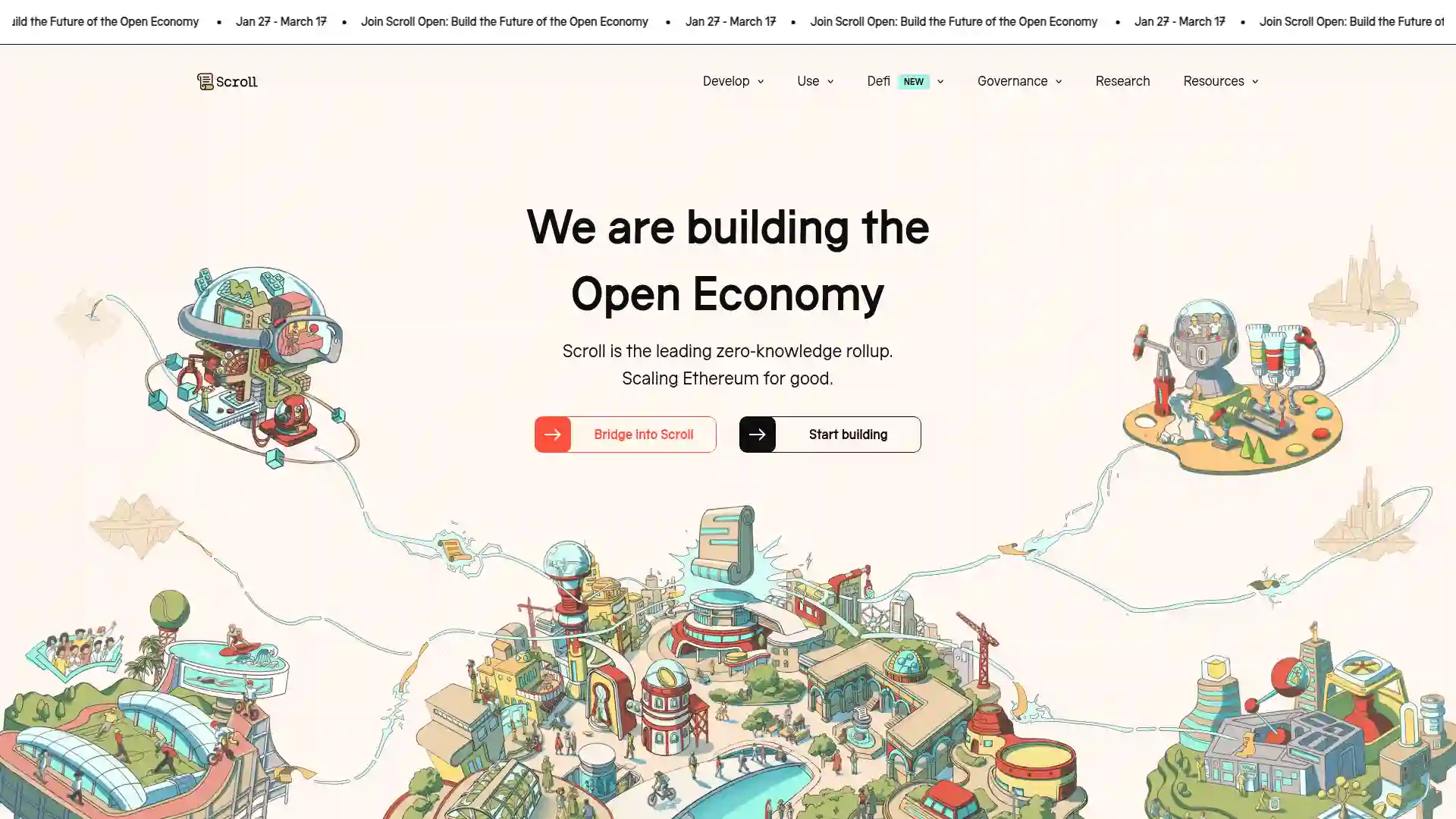Scroll (SCR)
Scroll is a scaling solution for Ethereum designed to tackle scalability challenges. It operates as a Layer-2 solution built on the zkEVM (Zero-Knowledge Ethereum Virtual Machine), with a focus on enhancing security and performance.
Overview
Founded in 2021 by Haichen Shen, Sandy Peng, and Ye, Scroll addresses Ethereum's scalability issues by processing transactions off-chain and bundling them for verification on the Ethereum mainnet. The Mainnet, launched in October 2023, aims to augment Ethereum's capacity by reducing transaction costs and boosting processing speed through zero-knowledge proofs while maintaining security and decentralization.
Ecosystem

| Ticker | SCR |
| Category | Smart Contract Platform |
| Website | https://scroll.io/ |
| @Scroll_ZKP | |
| Contract Addresses | |
|---|---|
| scroll | 0xd2...1b Copied! Copied! |
Scroll Sepolia testnet
The Scroll Sepolia testnet functions atop Ethereum’s Sepolia Testnet, acting as a zero-knowledge rollup layer. It includes demo applications such as a bridge, block explorer, and rollup explorer. This testnet provides an environment for assessing changes before deployment to the Mainnet, ensuring a setting similar to the mainnet for evaluating upgrades and performance.
Products
Scroll Origins
Scroll Origins is an NFT program recognizing developers who deploy contracts on the Scroll Mainnet within 60 days of the Genesis Block. These NFTs, each with a unique polynomial design related to zkEVM technology, reflect deployment details like date and address. The NFTs are classified based on deployment timing and were available for claiming starting December 14, 2023.
Scroll Canvas
Scroll Canvas serves as a platform for showcasing on-chain credentials and achievements within the Scroll ecosystem using verified Badges. These non-transferable badges are linked to individual wallets and attest to user participation and milestones. The Ethereum Attestation Service integration ensures each Badge's authenticity, and users can document achievements and organize Badge collections while builders issue Badges to enhance user engagement.
Architecture
Scroll's architecture is organized into three layers: the Settlement Layer, the Sequencing Layer, and the Proving Layer.
- The Settlement Layer uses Ethereum for data availability, ordering, and validity proof verification, supporting communication and asset transfers.
- The Sequencing Layer processes transactions and generates L2 blocks, batching transactions, posting data to Ethereum, and submitting validity proofs for finality.
- The Proving Layer involves provers generating zkEVM validity proofs to verify L2 transactions, coordinated to ensure efficient proof distribution and finalization.
Scroll Node
The Scroll node features three components to enable network interaction:
- The Sequencer processes L2 transactions and generates new blocks, ensuring compatibility and security.
- The Coordinator manages execution traces and tasks for Rollers.
- The Relayer oversees L2 block status and message relays, ensuring effective network operations.
Roller Network
The Roller Network generates validity proofs for the zkRollup using hardware accelerators to decrease proving time and costs. It converts execution traces into circuit witnesses and aggregates proofs into a single block proof, enhancing proof generation efficiency and accuracy.
Rollup and bridge contracts
Scroll interacts with Ethereum via Rollup and Bridge contracts. The Rollup contract manages L2 state roots and blocks, storing data on Ethereum to support data availability and security for Scroll blocks. The Bridge contracts enable message and asset transfers between L1 and L2, facilitating communication and asset movement.
Funding
Scroll secured $50 million in its Series B funding round on March 6, 2023, totaling $80 million across two rounds. Key investors include Polychain and Sequoia Capital China. As of March 7, 2023, Scroll was valued at $1.8 billion, supported by 20 institutional investors.
